Boston Fern (Nephrolepis exaltata) is a beloved houseplant known for its lush, feathery fronds and timeless appeal. Belonging to the Polypodiaceae family and Nephrolepis genus, this perennial plant hails from the tropical and subtropical regions of the Americas, where it thrives in humid, shaded environments. Over the years, it has earned its place as a staple in homes and gardens, particularly popularized during the Victorian era.
While stunning, Boston ferns require a delicate touch. They are known for their specific needs, including consistently moist soil, bright indirect light, and high humidity levels. Meeting these requirements can be a challenge, but with the right care, they reward their owners with vibrant, healthy growth. Whether gracing a southern porch or enhancing your indoor space, Boston ferns demand attention but are well worth the effort.
In this guide, we’ll cover everything you need to know to keep your Boston fern thriving, from creating the ideal environment to ensuring ongoing care. With a bit of commitment, you can enjoy the beauty and charm of this classic plant year-round.
| Common name | Bostonfern, Boston Fern, Dwarf Feather Palm, Fluffy Ruffles |
| Botanical name | Nephrolepis exaltata |
| Family | Polypodiaceae |
| Genus | Nephrolepis |
| Species | exaltata, exaltata |
| Origin | Tropical & Subtropical America |
| Life cycle | Perennial |
| Plant type | Epiphyte |
| Hardiness zone | 10, 11 |
| Sunlight | Dappled Sunlight |
| Maintenance | Low |
| Soil condition | Loam |
| Drainage | Well-Drained |
| Growth rate | Fast |
| Spacing | 12 in. – 3 ft. |
| Height | 2 ft. – 3 ft. |
| Leaf color | Gold, Yellow |
| Stem color | Brown, Copper |
| Leaf benefit | Showy |
| Garden style | Shade Garden |
| Uses | Container |
I. Appearance and Characteristics
Nephrolepis exaltata, known as the sword fern or Boston fern, is a species of fern in the family Nephrolepidaceae. It is native to the Americas. It is also known as the Boston sword fern, wild Boston fern, Boston blue bell fern, tuber ladder fern, or fishbone fern.
The fronds of Nephrolepis exaltata are 50–250 centimetres (20–98 in) long and 6–15 centimetres (2.4–5.9 in) broad, with alternate pinnae (the small “leaflets” on either side of the midrib), each pinna being 2–8 centimetres (0.79–3.15 in) long. The pinnae are generally deltoid, as seen in the adjacent picture. The pinnate vein pattern is also visible on these highly compound leaves. The edges appear slightly serrate. The plant can grow both terrestrially and as an epiphyte, linear to lanceolate and glandular. The rachis bears monochrome sprout soups. The leaflets are entire, undestroyed and oblong-lanceolate up to 4.8 inches (120 mm) long and up to 0.9 inches (23 mm) wide. They stand at a distance of less than 1 centimetre (0.39 in). The sori are rounded. The spores are warty and wrinkled. Nephrolepis exaltata forms an underground rhizome that is slim and tuberous.
The species has erect fronds, but Nephrolepis exaltata ‘Bostoniensis’ (Boston fern) and ‘Teddy Junior’ have gracefully arching fronds. This mutation was discovered in a shipment of N. exaltata to Boston from Philadelphia in 1894. Other proposals for the origin of the term Boston fern were documented by David Fairchild, who stated that the term came from Florida pioneer nurseryman John Soar, who sent the plants to his friend in Boston.
t is a perennial plant hardy in USDA plant hardiness zones 9–11. Although the fern may appear totally dead during periods of frost, it will re-emerge in the spring. In general, the Boston fern thrives in damp, but not soggy, soil that is rich in nutrients. Of the common cultivated ferns, the Boston fern is the most tolerant to drought. The fern is acclimated to humid conditions, so when grown as a house plant, it is necessary to mist the plant when relative humidity falls below around 80%. Although the plant prefers partial shade or full shade outdoors, it doesn’t grow in shade when indoors and responds best to bright filtered light. The plant is usually propagated by division of the rooted runners, as named cultivars will not produce true spores. It is safe for pets as it is known to be non-toxic.
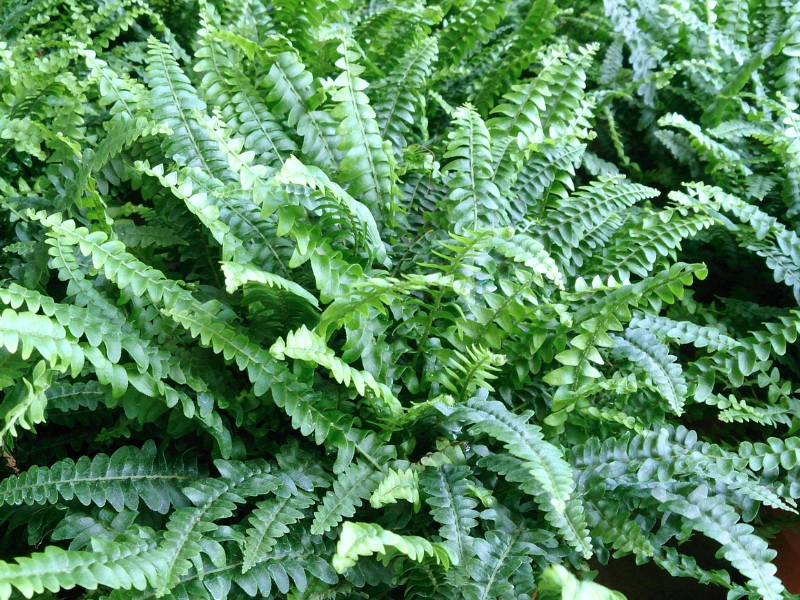
II. How to Grow and Care
Sunlight
Boston fern does best when grown in a location with bright, indirect light. Too much shade can result in sparse fronds that appear lackluster, and too much sun can burn the fronds. For this reason, Boston fern is a good choice for a porch plant that receives filtered sun in the morning and afternoon shade.
Temperature and Humidity
Boston fern prefers temperatures between 65 and 75 F. They can’t tolerate extreme heat or extreme cold. Temperatures above 95 F can harm the plant, as can near-freezing temperatures below 35 F. This fern also thrives in humidity levels above 80 percent. You can mimic these conditions by setting your fern on a tray filled with water and pebbles and by providing a regular misting. In conditions of low humidity, the tips of your plan’s fronds may turn brown. If this happens, use the recommendations above to up the moisture.
Watering
The key to successfully growing a Boston fern is to keep the soil lightly moist—but not soggy—during the spring and summer when it is actively growing. This usually requires weekly waterings for indoor plants and more frequent waterings for those grown outside in warm environments. Regularly test the soil with your hand to dial in the right schedule. If the soil dries out, the fern’s foliage may quickly drop. During the fall and winter months, reduce watering to every other week, but make sure the fronds don’t dry out during this period of dormancy.
Soil
As ferns often live in tropical environments, they do appreciate a rich soil blend. However, they don’t necessarily need one. A mixture of peat moss, sand, and good potting soil can provide the good drainage that the Boston fern needs while still holding enough water to keep the soil moist. If you have compost at hand, blend a little of that into your peat moss soil mix as well. Ferns (especially potted ferns) do appreciate a soil that’s rich with plant matter.
Fertilizing
Use liquid formula for your Boston fern. You can opt for an organic such as liquid kelp, or you can choose a commercial houseplant fertilizer that’s diluted to half its normal strength. Fertilizer should be applied at the base of the Boston fern so as to not scorch its fronds.
Pruning
The Boston fern doesn’t require much in the way of pruning. Older Boston fern leaves can be snipped off at the base of the plant to allow for new leaf growth. This also helps to remove leaves which may be browning or otherwise the worse for wear. Generally, pruning Boston ferns is a matter of aesthetics rather than one of plant maintenance.
Propagation
Propagating a fern takes one of two forms: runners, or division. While fern spores are viable, they’re difficult to grow new plants from.
Runners will extend out from a large Boston fern and will gradually develop roots. These runners are called stolons. You can remove these at the base of the old plant and repot them in sterile potting soil. They will develop a new Boston fern from the stolon.
Alternatively, you can divide a Boston fern. To do this, wait until the soil becomes dry more than you normally would. This will allow the root system to dry out a bit too. Remove the Boston fern from its pot or carefully dig it up from the soil. Then, use a serrated knife to cut the fern’s root ball in half. You can cut it in quarters or eighths from there if you wish more plants to form. Repot the new Boston fern plants, keeping them moist but not wet.
How to Grow From Seed
Like all ferns, Boston fern does not generate seeds. Instead, ferns are grown from spores collected from adult plants. You can also purchase fern spores from a garden store.
Here’s how to grow Boston fern from spores:
- Gather a sheet of paper, a jar, potting soil, and pots (for indoor plants), or compost and peat (for outdoor plants).
- Hold your paper under the fronds of an adult fern. Shake the fronds gently to help spores fall from the underside of the leaves.
- Collect the spores in a jar and select a warm area for planting.
- Prepare your pot with potting soil or prep an outdoor area with a mixture of compost and peat.
- Wet the soil and broadcast the spores over the surface of the pot or the garden plot. Mist or gently water the soil to keep it moist at all times.
- In about a week, check the pot or garden for a thin green haze (prothallia) that contains the sperm and the egg. Continue misting to hasten fertilization.
- Mist frequently until you see the prothallia sprout, and then water the seedlings on a regular schedule to maintain moist soil conditions.
Repotting
If you are starting a runner in a new pot, or replanting a cutting from an older Boston fern plant, be sure to use a sterile, well-draining potting mix. This will help your new plant to take off without any crowding from weed seeds that might be in older soil.
Generally, you don’t have to repot a Boston fern unless you want it to grow larger. The roots fill the pot over time, and eventually will get too crowded. At that point, it’s good to divide your Boston fern every few years to allow it to develop new roots.
Overwintering
Foxtail fern goes through a period of dormancy in the winter, so some gardeners prefer to bring their potted fern indoors. However, trying to continue its growing cycle indoors often results in a smattering of brown fronds on the carpet. Instead, cut your potted plant back to 4 inches above the soil and store it in a cool, dry area, like a basement or garage. Water your fern once a month until spring, and then relocate it outside for a few hours each day, once outdoor temperatures warm up.
For garden ferns, perform a late fall cutback and withhold fertilization. Spread a thin layer of compost and mulch at the base of the plant and water it throughout the winter, as needed, to keep the soil barely moist.
Pests and Diseases
Common Pests & Plant Diseases
A Boston fern grown outside can become a target for whiteflies, mealybugs, and chewing insects, like snails, slugs, and caterpillars. Whiteflies can be found on the undersides of leaves where they suck the plant’s juices and leave behind a sticky mold. Similar symptoms present for a mealybug infestation. Chewing insects will leave behind a slimy trail and cause holes in the leaves.
Whiteflies are best controlled by reducing the population with several blasts from the garden hose. This may take a couple of treatments. Mealybugs can be spot treated with a diluted solution of isopropyl alcohol. Run a test spot to make sure your solution isn’t strong enough to burn the plant’s leaves. Slugs, snails, and caterpillars can be controlled by handpicking or by providing a rough surface around the plant to deter mollusks. This can be accomplished by sprinkling gravel, crushed eggshells, or coffee grounds at the base of the plant.
Indoor and outdoor ferns can also suffer from blight, a fungal infection that will leave the plant covered in a brow web-like mycelium. This condition can be treated naturally by simply repotting the plant in a sterile container and discarding the diseased soil in the process. Only treat your plant with a fungicide when all other methods have failed.
Common Problems
Overwatering your Boston fern can result in root rot, which causes your fern’s fronds to turn grey and its roots to brown. Repotting and discarding the diseased soil is the best treatment for this problem. Root rot can also be prevented by providing ample drainage and airflow to the fern’s roots.
III. Uses and Benefits
One of the most effective indoor plants for cleansing the air is the Boston fern. Toxins, including formaldehyde, plastic off-gassing, and cigarette smoke, are removed from the interior air thanks to it. This plant can potentially aid with ailments including dry skin, dry noses, and dry throats by adding moisture back to the dry air.
IV. Types of Boston Fern
Boston fern comes in several varieties that each vary in appearance. Whether you opt for a dwarf variety, like the lemon button fern, or one with yellow fronds, the care still remains the same.
Here are some popular choices:
- Nephrolepis exaltata ‘Compacta’ is a short, compact, and upright version of the main Boston fern species. This type is sturdier than other varieties and will withstand a little heat and dryness.
- A medium-sized cultivar, Nephrolepis exaltata ‘Florida Ruffle’ has feathery, ruffled fronds which grow in a dense clump. This plant can be grown both indoors and out but thrives in an ultra-humid environment.
- Nephrolepis exaltata ‘Golden Boston’ yields golden leaves and can be grown outside in a pot, and then overwintered indoors to be relocated outside again the next season. This variety is considered low-maintenance and makes a wonderful air purifier for the home.
- Similar to ‘Golden Boston,’ Nephrolepis exaltata ‘Rita’s Gold’ also grows yellow, almost chartreuse, fronds. It shimmers in the sunlight and compliments impatiens and begonias in a container setting.
Nephrolepis exaltata ‘Fluffy Duffy’ is a small, dense, and finely textured fern. This variety’s feathery fronds look great in hanging baskets, and it benefits from a daily misting year-round.
Find Where to Buy the Best Boston Fern (Nephrolepis exaltata)

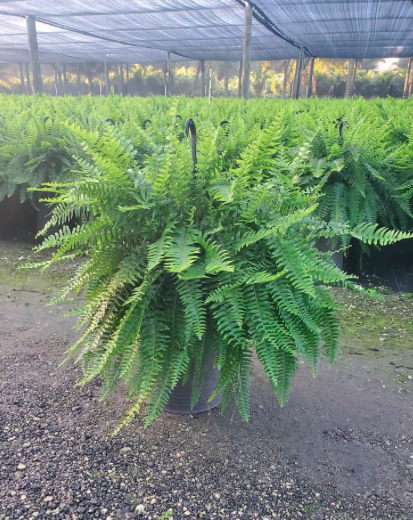

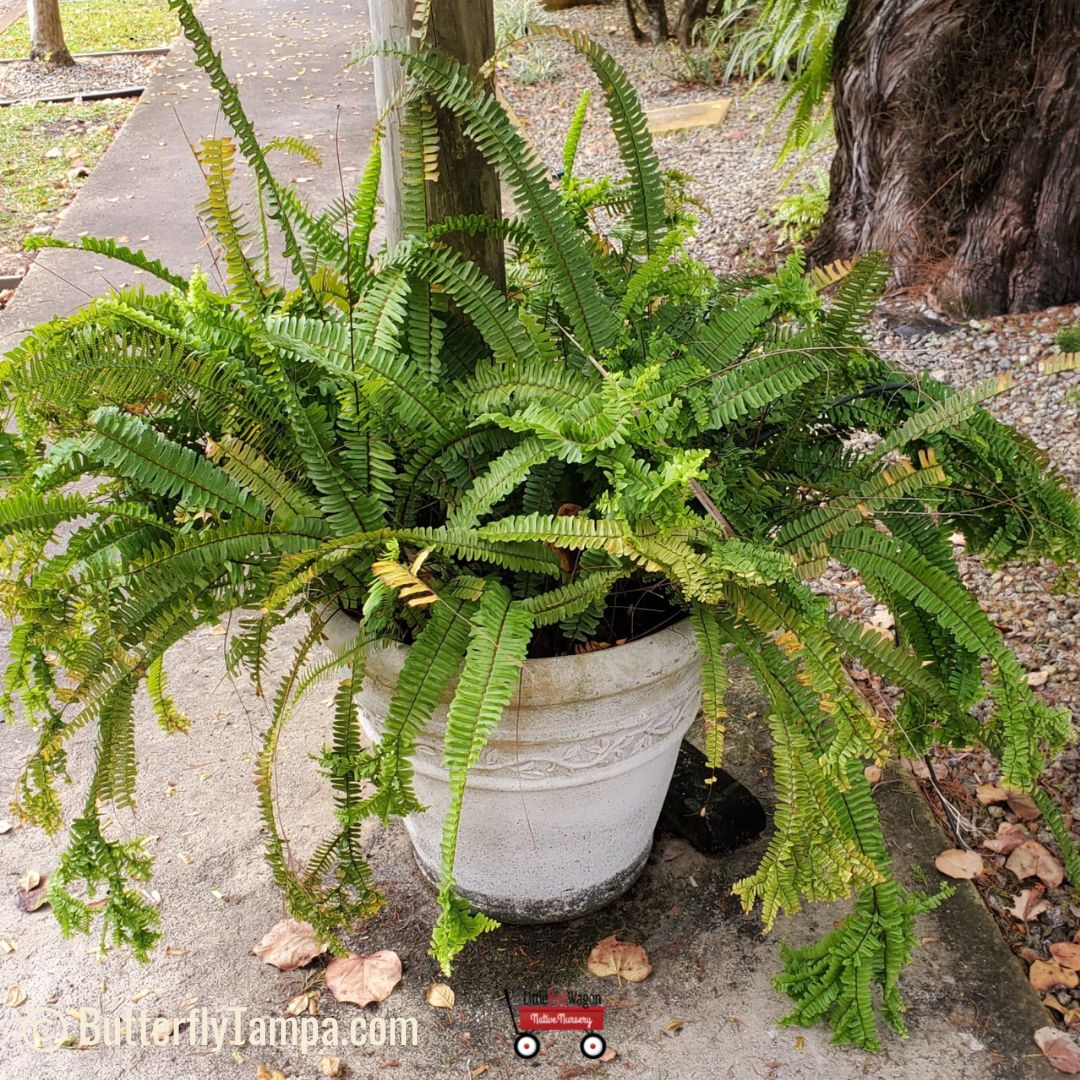



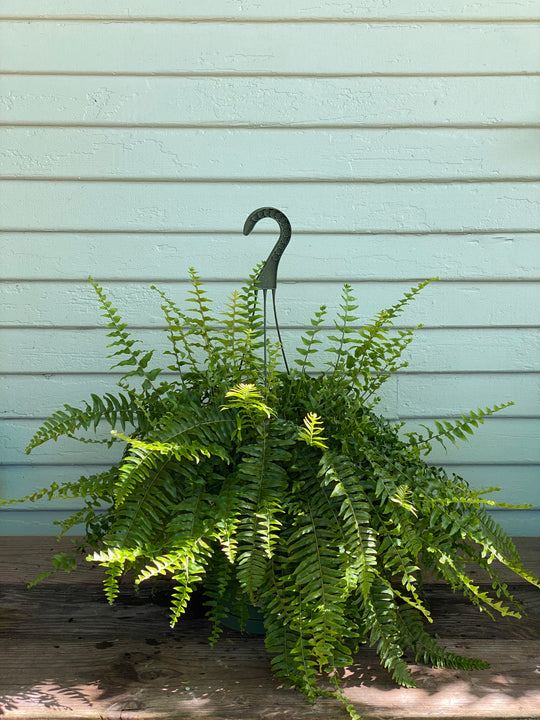

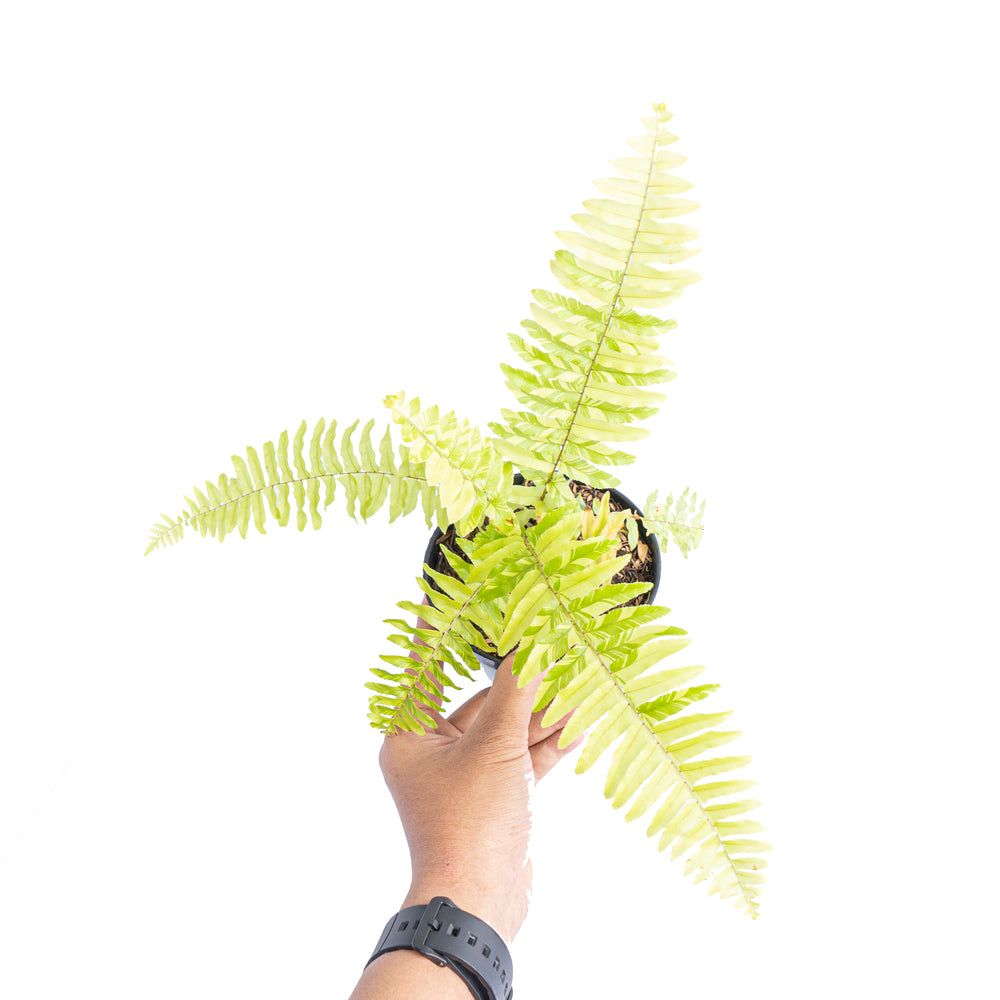
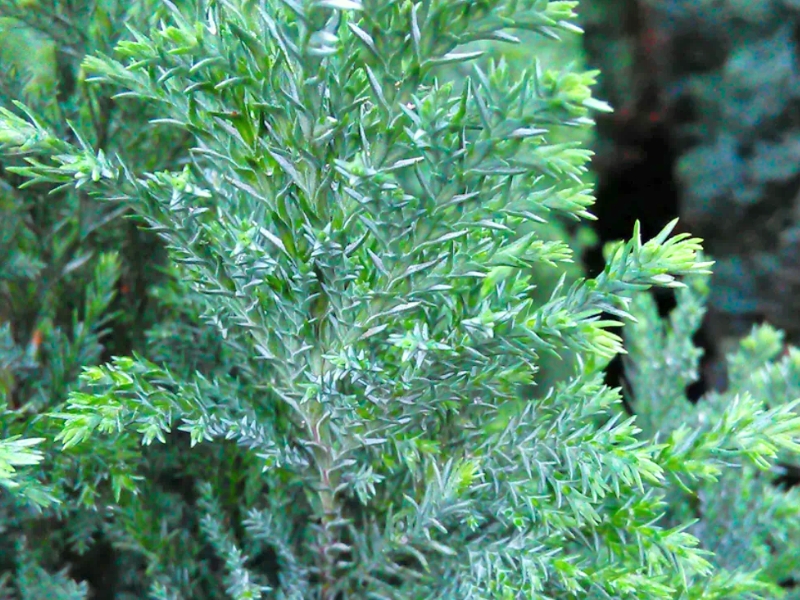
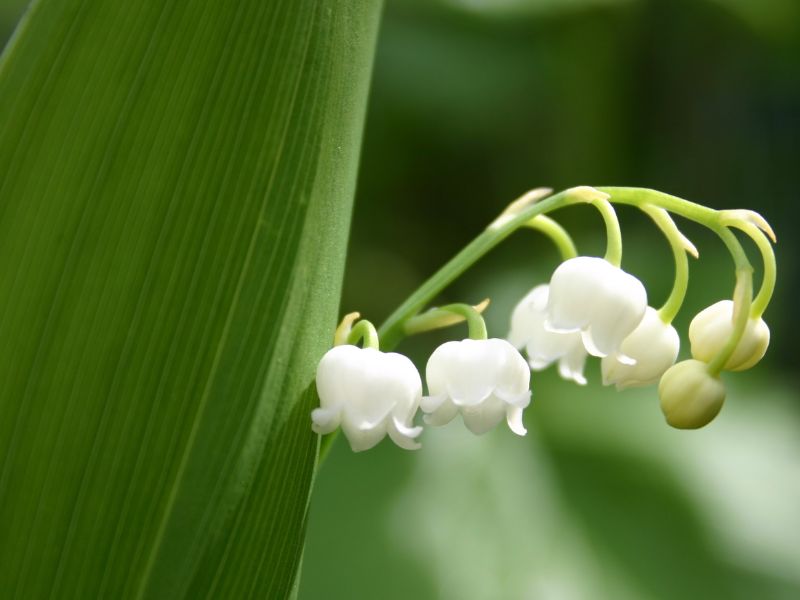
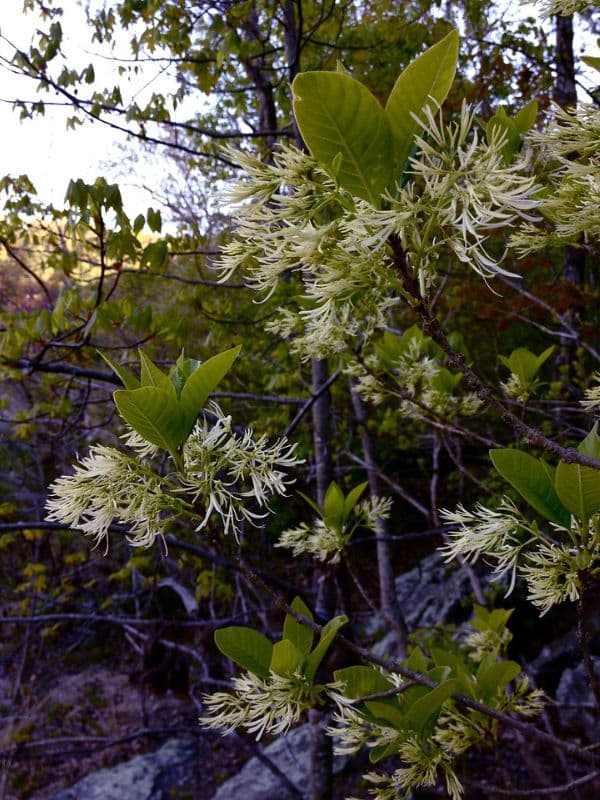
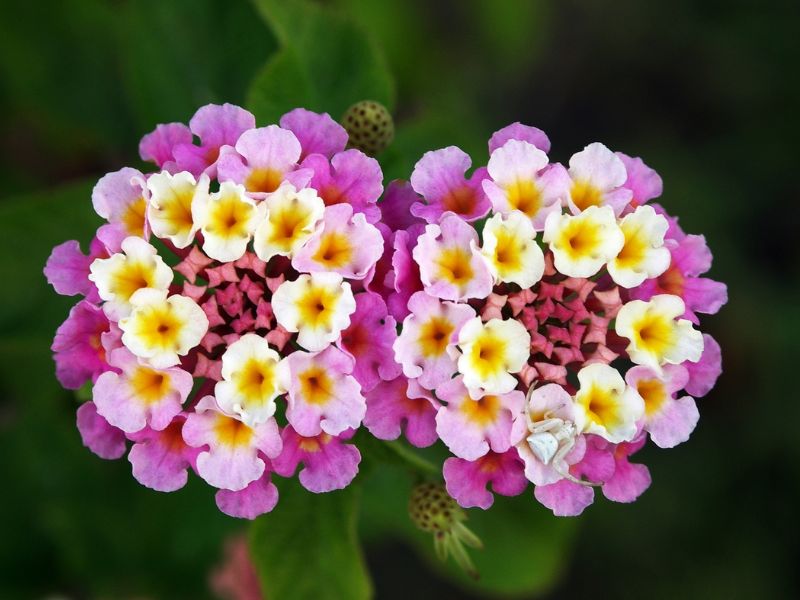
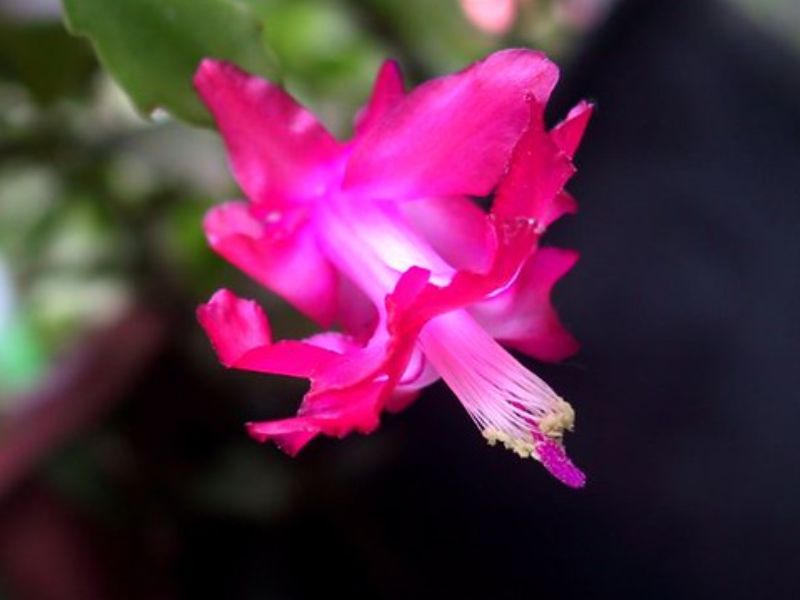
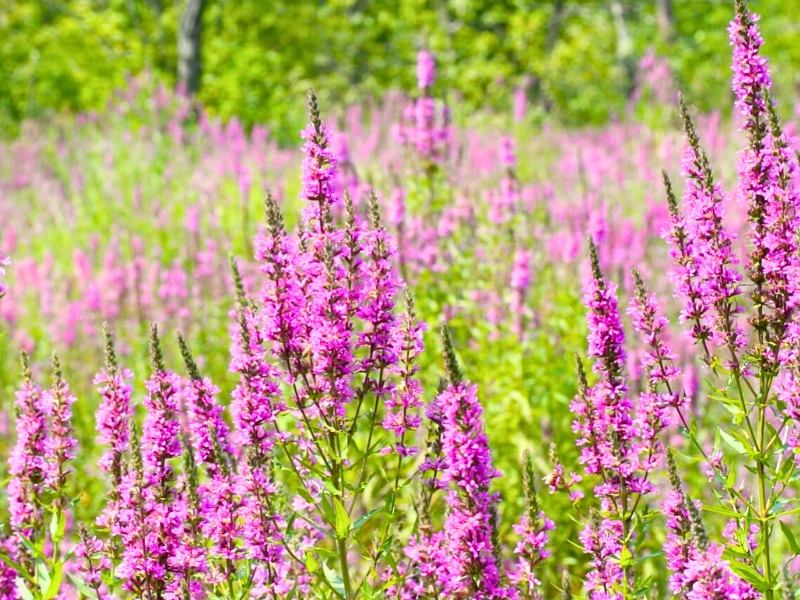
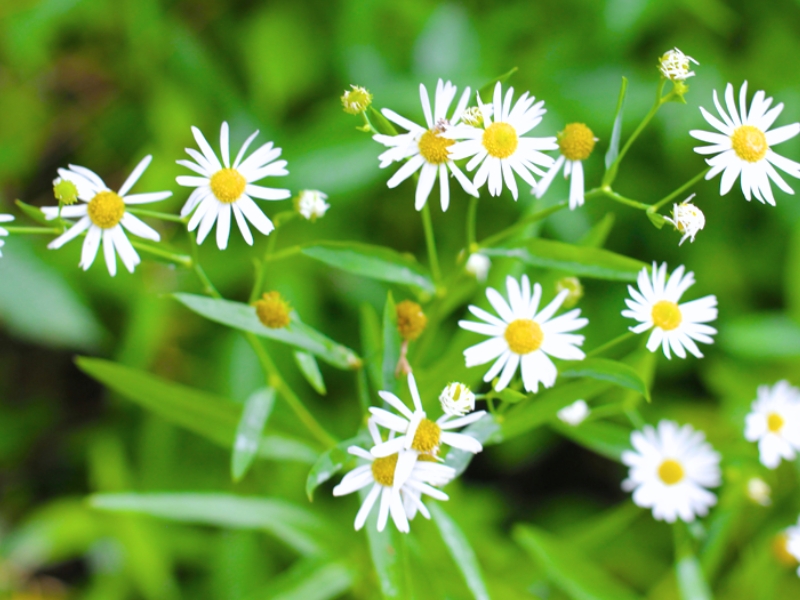
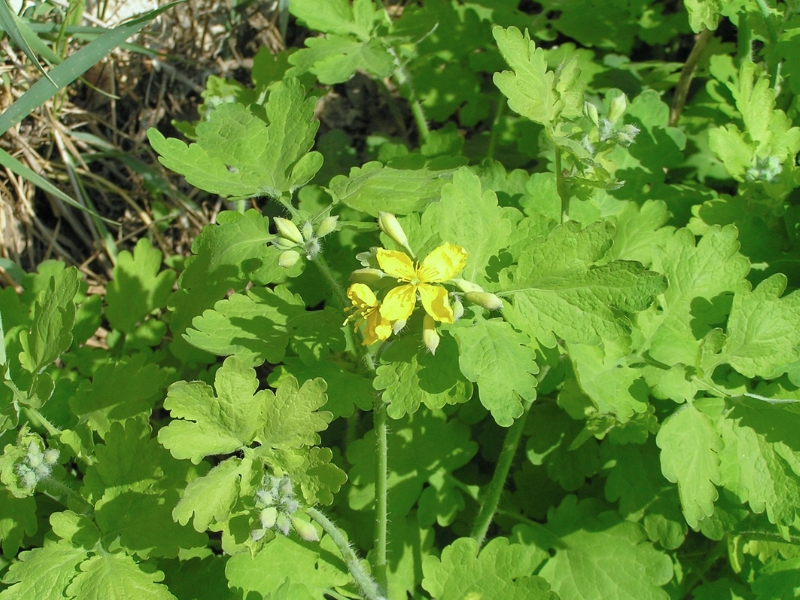
Leave a Reply